Arkansas is a true treat! It’s home to incredible wildlife like coyotes, gray foxes, red foxes, and bobcats. Oh, and don’t forget the southern flying squirrels! And with its variety of landscapes, Arkansas is full of fun surprises.
From the Ozark and Ouachita Mountains in the west to the dense forests in the south and the flatlands of the east – it all adds up to one of Earth’s awesome places. To stay incredible, landowners must make the right choices to protect Arkansas’s natural beauty.
Let’s explore who’s controlling the future of this state’s land. Keep reading to discover the top landowners in Arkansas and how they’re contributing to preserving this great state.
1. Federal Government — 3,159,486 Acres
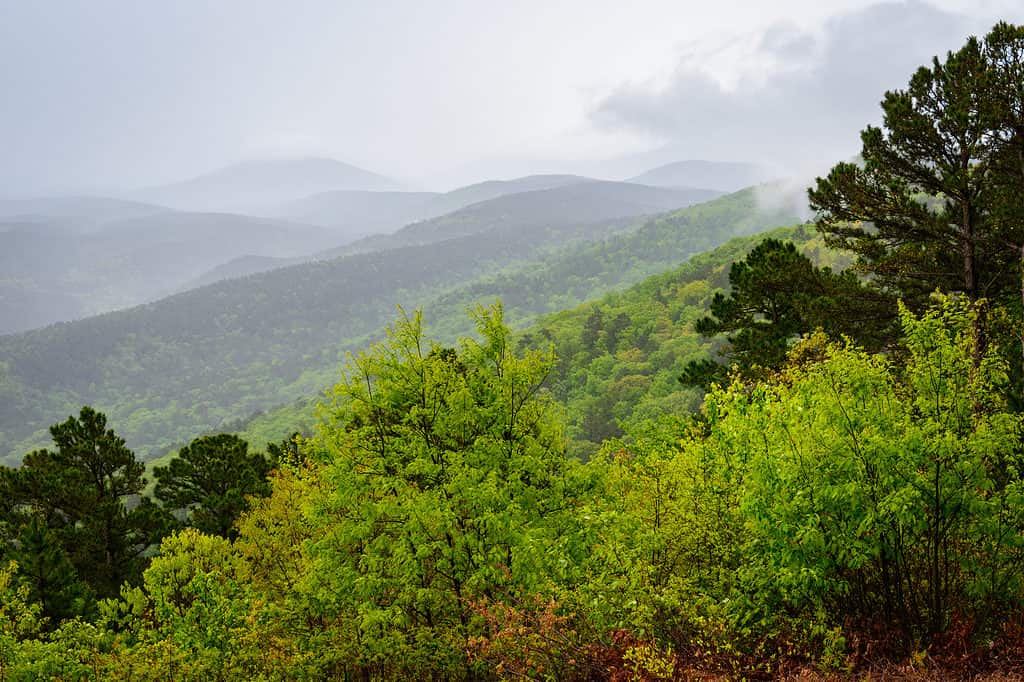
Ouachita National Forest in Arkansas is federally protected land through the Forest Service and the National Park Service.
©Zack Frank/Shutterstock.com
The federal government controls 3,159,486 acres in Arkansas. They own 9.4% of the land for a total of 3.2 million acres, making them the top landowners in Arkansas. The main agency responsible for this land is the Forest Service, which owns 82.1% of all federally owned land in Arkansas.
Arkansas is fortunate to have a wealth of federally protected land. Agencies such as the Forest Service and the National Park Service oversee the land. Public access to state parks offers Arkansas recreation, conservation, and economic growth opportunities. In 2013, national sites welcomed over 2.7 million visitors who spent over $144 million in local communities. With federal government support, Arkansas can maintain its natural treasures for future generations.
2. Weyerhaeuser — 1.3 Million Acres
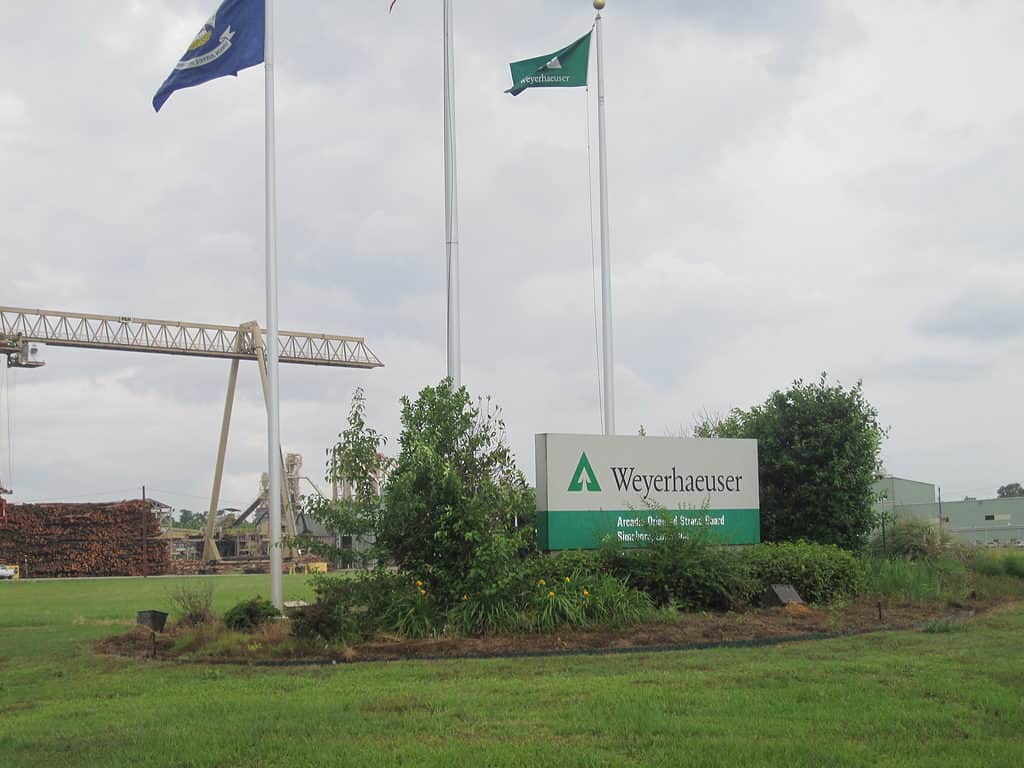
Weyerhaeuser is one the largest private landowners in the United States and owns 1.3 million acres in Arkansas.
©Billy Hathorn, CC BY-SA 3.0 <https://creativecommons.org/licenses/by-sa/3.0>, via Wikimedia Commons – License
Weyerhaeuser possesses a staggering 1.3 million acres throughout Arkansas. The company grew substantially after merging with the Plum Creek Timber Company. They’re big players in the landownership game! The newly merged Weyerhaeuser company owns 13 million acres across the country.
Weyerhaeuser operates a plywood mill and tree nursery in Columbia County. The company also runs sawmills in Dierks and timberlands across the state. Plum Creek mainly has large land holdings in Union, Ashley, Drew, and Dallas counties.
The Weyerhaeuser company first came to Arkansas in 1956. Dierks Forest was one of their wisest purchases back in 1969. Now, over 650 employees in Arkansas work at locations in Emerson, Dierks, and Texarkana. There are also employees stationed at the famous Arkansas Hot Springs.
The Plum Creek Timber Company was a company that owned forests, managed forests, and made products from trees. It also mined minerals and developed land. The company was headquartered in Seattle. It was created from the Burlington Northern railroad’s natural resources holdings in 1988.
The merger provides the company with significant advantages. These advantages include the ability to drive performance through shared best practices. An anticipated annual cost synergy of $100 million will provide even more state benefits. Arkansas will benefit tremendously in terms of job creation and environmental protection.
3. Bill Gates — 47,927 Acres
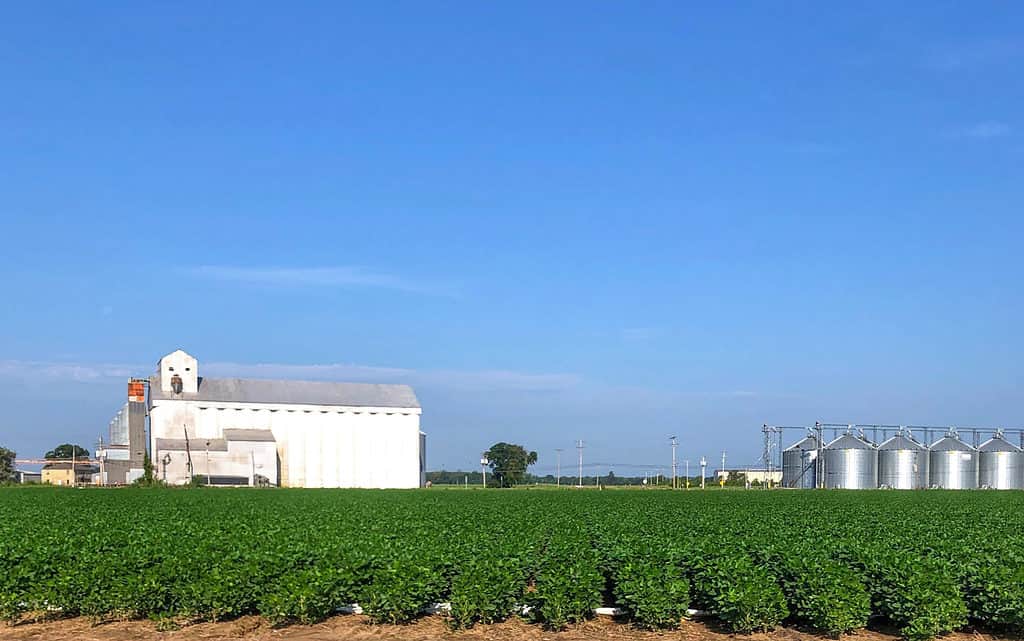
Bill Gates owns nearly 270,000 acres of farmland in the United States with most of this land located in Arkansas.
©iStock.com/Michael Dean Shelton
Bill Gates owns 47,927 acres in Arkansas. He’s one of the top landowners in Arkansas and has big plans for sustainable farming practices. The Gates family’s vast real estate holdings include timberland, cattle ranches, and hay farms.
In total, Bill Gates owns nearly 270,000 acres of farmland in the United States. Most of that land is in Arkansas. The Gates family owns 47,927 acres of that land in Arkansas, 17.8% of all the land they own. To make these large land acquisitions easier, the purchases take place through Bill Gates’s Cascade Investment LLC, a private investment company.
Since the early 2000s, Gates and his wife have invested in agriculture to help farmers in developing countries. In 2008, The Bill & Melinda Gates Foundation announced $306 million in grants to help farmers in Africa and other parts of the world. The grants help the farmers produce more food and make more money.
4. Northwest Arkansas Land Trust — 6,000 Acres
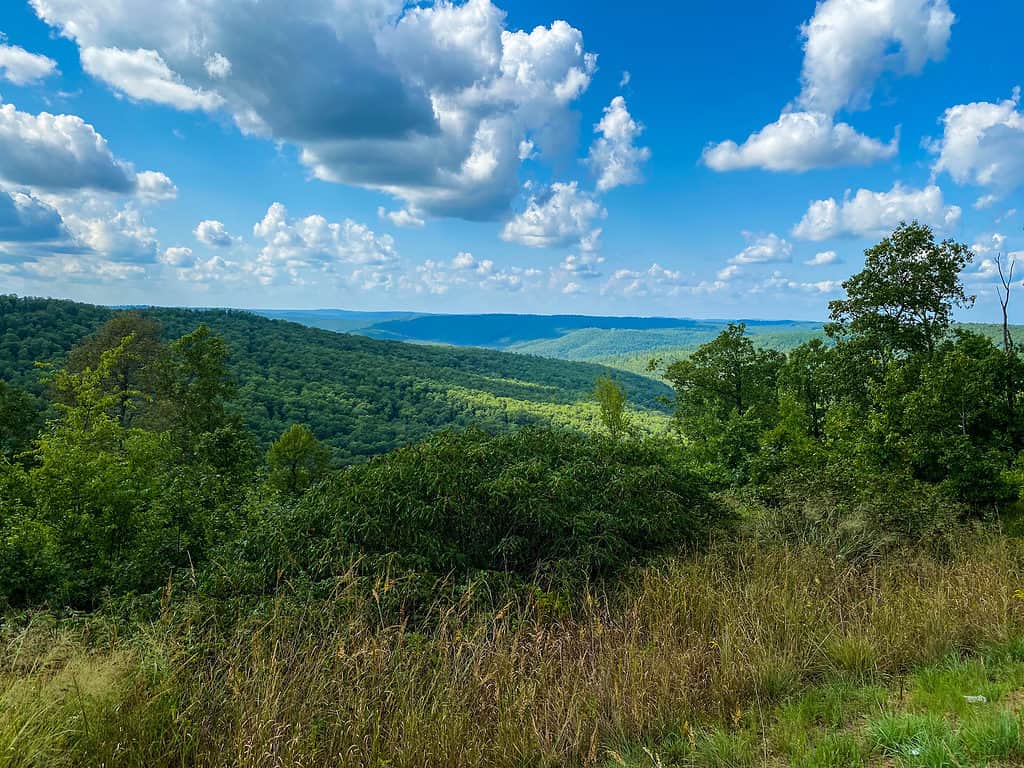
The Northwest Arkansas Land Trust oversees and protects 6,000 acres in Northwest Arkansas.
©iStock.com/Michael Dean Shelton
The Northwest Arkansas Land Trust (NWALT) oversees 6,000 acres. They might not be one of the biggest landowners in Arkansas, but they make a huge impact. The land trust’s service area includes 13 counties. As their name suggests, the counties are all in Northwest Arkansas.
The Land Trust service area includes Benton, Washington, and Madison. It also includes acres in Carroll Counties in the northwest corner of Arkansas. These counties are also the Trust’s “priority” counties. The other counties in the Land Trust service area are Boone, Marion, Newton, and Searcy Counties to the east. Finally, there are Crawford, Sebastion, Franklin, Johnson, and Logan Counties to the south.
The Northwest Arkansas Land Trust was started by people who cared about the area and wanted to stop development. They wanted to “preserve and enhance the quality of life for all people in Northwest Arkansas through the permanent protection of land.” You can find this mission and other important core values on their company site.
In May 2022, Grady Spann became the chief executive officer. Spann is taking over for Terri Lane, who led the Land Trust from 2012 until now. He explains that NWALT protects land by getting people to donate it, having people agree not to build on it, buying land, partnering with other organizations, and taking care of the land. Currently, Land Trust has saved more than 6,000 acres. The latest addition was more than 800 acres near Siloam Springs.
Northwest Arkansas Land Trust: Recently Acquired Land
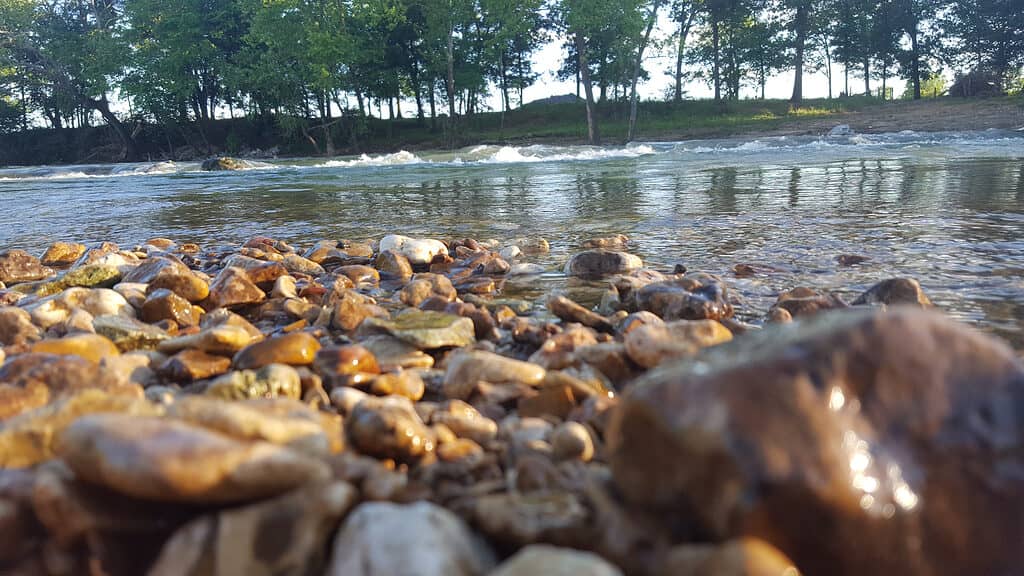
Northwest Arkansas Land Trust recently began managing Siloam Springs preservation located just east of the Illinois River.
©Aaron Capehart/Shutterstock.com
The nonprofit Northwest Arkansas Land Trust (NWALT) recently began managing the Siloam Springs preservation. It’s a stunning 830 acres in Benton county. The land presents a prime conservation opportunity.
The preserve is on the Arkansas/Oklahoma border. You can find it just east of the Illinois River by the area that used to be the historic Lake Frances. This gorgeous new preserve is one of the biggest stretches of continuous forest in western Benton County.
The organization purchased the land thanks to a grant from the Walton Family Foundation. Ryder Snell, a spokesman for NWALT, said that the purchase price was around $3 million. They bought it from the family of Frances Sloan Thomas. To date, it’s the biggest piece of land they have bought, making it one of the most important conservation properties.
There are many good reasons to protect the land in Northwest Arkansas. For starters, conservation helps ensure clean water. It also helps protect working farms and beautiful scenery. Plus, people will also be able to enjoy outdoor activities like hiking, biking, and bird-watching. Another big benefit is green infrastructure.
Land Conservation Promotes Arkansas’s Green Infrastructure

Beaver Lake is a full-service outdoor recreational experience with killer bass fishing and plenty of amenities for the whole family
©iStock.com/Serrhel
How do preservations help with green infrastructure? Green infrastructure includes wetlands, greenways, and other natural areas. It also links parks, trails, urban centers, and neighborhoods together. Green infrastructure also helps to preserve scenic viewsheds. This makes our region more livable and increases the value of homes.
Some cities are beginning to plan for areas with many plants and trees (connective greenways), but this is not happening in Northwest Arkansas. This means that natural areas are being used quickly, resulting in the breakup of important ecosystems. Not just ecosystems–scenic areas and wildlife habitats are suffering too.
But don’t worry, there’s hope! The Northwest Arkansas Land Trust wants to help developers to learn more about land use planning. They’re spreading the word about right and wrong land practices. This way, they can protect green infrastructure for the people who live in Arkansas now and those who will live there in the future.
Exploring Arkansas’s National Sites
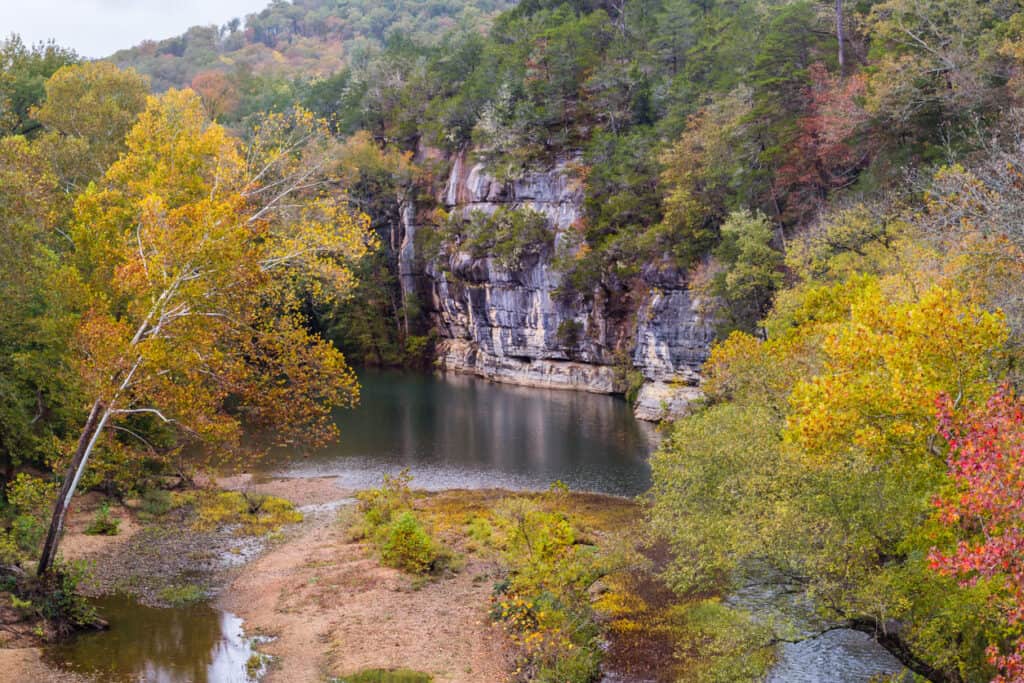
Buffalo
National River in Arkansas is one of the few remaining undammed rivers in the United States.
©iStock.com/Strekoza2
Everybody benefits when landowners work together to preserve the state’s natural beauty. This is evident in the way the federal government manages the national sites they oversee in Arkansas. Visiting national parks and historical sites is a fast way to open your mind and connect with the world around you.
For starters, the Buffalo National River is lovely to look at. It was established in 1972 and is one of the few rivers that has never been dammed. It’s 135 miles long and flows through the Ozark Mountains.
Fort Smith National Historic Site explores the time when the United States was expanding its territory. This was a time when there were many battles between the US military and Native American tribes. The site includes stories of soldiers, Native Americans, and lawmen.
Arkansas’s Fort Smith National Historic Site also includes the Trail of Tears. This was when the US government forced Native Americans to move from their homes to new lands. Many lives were lost. The Trail of Tears goes through nine states. It starts in North Carolina and then goes to Georgia, Tennessee, Illinois, Missouri, Alabama, Kentucky, and Arkansas. The trail finally ends in Oklahoma.
Next, Hot Springs National Park is also a must-see location; it’s very special. It has a lot of history and interesting things to see. People have been coming here for hundreds of years to see the natural hot springs, mountains, and other cool geological features. Many trees and creeks are also nearby, making it a beautiful place to visit.
Finally, the National Military Park at Pea Ridge is a place to remember and honor the 23,000 soldiers who fought and died during the Civil War. The battlefield is 4,300 acres and is one of America’s most intact Civil War battlefields. You can thank the national park system for keeping this land available to the public.
Why Does the Federal Government Own So Much Land in Arkansas?
Roughly 50% of the land in the Western United States is owned by the U.S. government. This is attributed in part to the fact that much of the terrain in this region is either mountainous or arid and unsuitable for cultivation, which made it unattractive to homesteaders looking to claim land.
The U.S. government owns over 3 million acres of land in Arkansas, primarily managed by the U.S. Forest Service and the U.S. Army Corps of Engineers.
Some of the most well-known public lands in Arkansas include the Ouachita National Forest, Hot Springs National Park, and Buffalo National River, all of which are managed by the federal government.
In addition to recreational opportunities such as hiking and camping, these public lands in Arkansas are also important for their ecological and cultural significance. This land helps to provide habitat for wildlife and preserve historical sites.
Summary of the 4 Largest Landowners in Arkansas
Here are the 4 largest landowners in the state of Arkansas:
| Rank | Landowner | Land Size |
|---|---|---|
| 1 | Federal Government | 3,159,486 acres |
| 2 | Weyerhaeuser | 1,300,000 acres |
| 3 | Bill Gates | 47,927 acres |
| 4 | Northwest Arkansas Land Trust | 6,000 acres |
Final Thoughts on Top Landowners in Arkansas
Arkansas has many wonders! There’s a lot to see, from its awe-inspiring national parks to its fascinating historical sites. And it’s not just the sights that make Arkansas special – the people care deeply about their land and its preservation.
The top landowners in Arkansas play a big role in what the state will look like for future generations. From landowners like Gates to organizations like the Northwest Arkansas Land Trust, it’s a team effort. It’s also impressive how much work the federal government puts into the national parks system.
By providing public access to historic sites, everyone can connect with what Arkansas is all about. Thanks for taking a moment to appreciate the efforts underway to preserve the state’s land and heritage. If you’re ever in Arkansas, be sure to check out the Fort Smith National Historic Site, or the popular Hot Springs National Park.
Do you still feel a need to quench your thirst for knowledge? We’ve got you covered. Discover more about Arkansas with the articles below.
The photo featured at the top of this post is © OakleyOriginals / CC BY 2.0 – License / Original
Sources
- Northwest Arkansas Land Trust, Available here: https://www.nwalandtrust.org/who-we-are
- Talk Business, Available here: https://talkbusiness.net/2015/11/weyerhaeuser-plum-creek-merge-to-form-23-billion-company-no-word-on-arkansas-impact
- Ballotpedia, Available here: https://ballotpedia.org/Federal_land_ownership_by_state
- Talk Business, Available here: https://talkbusiness.net/2022/10/northwest-arkansas-land-trust-conserves-830-acres-in-benton-county
Thank you for reading! Have some feedback for us? Contact the AZ Animals editorial team.






